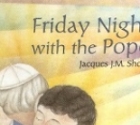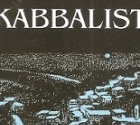 (272x300)-1451989185.jpg)
Photo by: Graham C99-www.flickr.com
…….Unless you're buying it in paperback at the airport, or from the overflowing CRIME section of the bookstore, or squeezed between deodorant and toothpaste at your vacation hotel. Publishers and their accountants love nothing better than mysteries or thrillers, police procedurals or spy novels, and best of all, a bestselling author who can churn out a series. This genre of literature is criminally easy to spot on a bookstore shelf or the spinning rack in a departure terminal. The covers have the iconic design elements: embossed gold, slashes of red and black, a blood-drenched knife, a person in half-shadow, a blurry street lamp, and a blurb that promises suspense, surprises, and most importantly, a satisfying solution. Who did it and why did they do it has been around as a literary device for centuries. In Greek mythology and in the Bible vengeance could come from above; nowadays it's likely to be the CIA, Scotland Yard, or a detective on an Indian reservation. If literature can serve as a prelude to social action then women were detectives long before they were MPs or Senators. It was obvious to all readers that Miss Marple had the ability to outwit Whitehall, 10 Downing Street, or a coroner from Cornwall.
Crime, criminals and solutions also come in a variety of accents, settings and time periods. Since taste is personal, my reading choices are strictly modern.
If you prefer mysteries set in monasteries, Georgian England, or Revolutionary America then skip reading this column.
Georges Simenon and Graham Greene are writers of outstanding psychological insight – the fact that their characters are involved in a mystery is an added dimension and not the other way around. A year ago I had difficulty locating Simenon in a few bookstores and wondered if the Maigret series was out of print. Now an American imprint, Tess Press, has begun reprinting the series in an elegant hardcover that is a joy to the eye. Any Maigret is wonderful – I recommend Maigret in Court. Greene is an author who ponders the mysteries of the human heart. Very often the struggle is between salvation of the soul and the salvation of a spy. Of the many novels he wrote the three most resembling classic mysteries are Stamboul Train, Brighton Rock, and Gun for Sale. Both the Belgian Simenon and the English Greene are absolutely none the worse for wear.
Winter in Madrid is my first encounter with a contemporary mystery by C.J. Sansom (he's written two 16th century crime thrillers.) The setting is wartime Spain and Brits who have become entangled in the bitter political struggle of Franco's Spain. It's a long, solid read with powerful emotions played against an historical backdrop.
Absolute Friends by John le Carre is a natural historical post-war jump from Spain's Civil War. This Le Carre I think is one of his best. The novel is a tapestry of events from Cold War Europe to today's terrorism. "On the day his destiny returned to claim him" is the hook the tale hangs on and the tale does not disappoint.
Dark House by Theresa Monsour is a departure from Europe, deception and decoding. There's a murder, there's a woman homicide detective and the setting is Minnesota, USA. This moves fast, has lots of suspense and the author describes quite a large variety of human failings. Fast, fun, a non-taxing read.
The Last Dark Place and The Big Silence are two of the Stuart Kaminsky mysteries featuring the Jewish detective Abe Lieberman, Lieberman is an introspective soul who's a bit world weary but committed with all his tired being to solving the frailties that come his way on Chicago's streets. Kaminsky has a dark sense of humor, an ability to pin a character down with a few words, and lots of compassion. He has also created a Russian detective, Porfiry Rostnikov, in another series. Anything by Stuart Kaminsky is highly recommended.
If you like police procedurals and love New York City, the 87th Precinct novels by Ed McBain remain some of my all-time favorites. I won't go into details because I've mentioned this author is a previous review column.
And now for a total switch – The Lost Painting by Jonathan Harr. This novel was widely reviewed and praised and since I Iove art I couldn't resist buying it. I was not disappointed. A young Italian art scholar sets out on a mesmerizing search for a lost Caravaggio painting. The mystery crosses countries and continents, and includes everything from scholarship to plain, old-fashioned greed. A wonderful read.
I've started my list with two of the "daddies" of mystery writing and ended with a current novelist who uses art as the springboard for his plot.
All I can say now is – enjoy!
 (350x156)-1452331757.jpg) Magazine Volunteers on a Summer's Evening
Magazine Volunteers on a Summer's Evening (350x246)-1452331346.jpg) ESRA Tel Aviv in the Community
ESRA Tel Aviv in the Community Honoring our Distributors of over 25 years
Honoring our Distributors of over 25 years Robert Kwong at the Yeshiva
Robert Kwong at the Yeshiva  Friday Night with the Pope - A Book Review
Friday Night with the Pope - A Book Review The Kabbalist - A Book Review
The Kabbalist - A Book Review  Pnina Moed Kass
Pnina Moed Kass